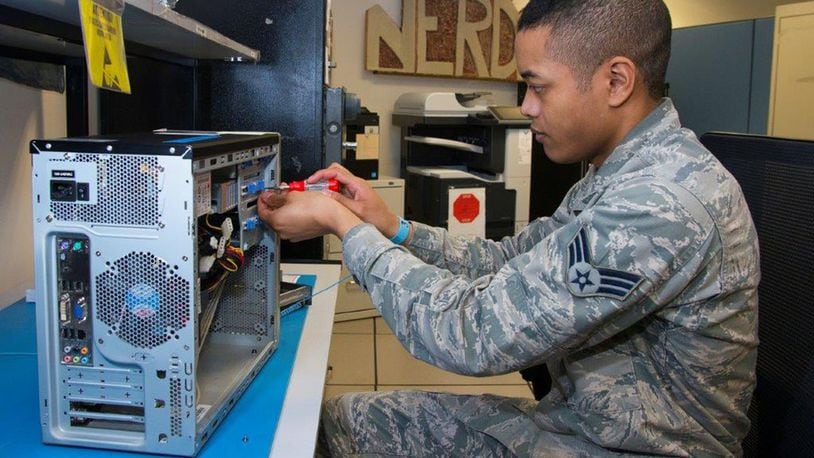GCCS is a large umbrella system within many different components. In AFMC, the Air Force component is used to plan and implement hundreds of deployments of people and assets around the world. The data is fed into the joint portion of the system so operational commanders have an accurate view of the status of forces and assets at all times.
The Wright-Patt GCCS office falls within the 88th Communications Squadron.
“The mission of the 88 CS is to provide its users with an ‘amazing cyber experience,’” according to Dan Guinta, supervisor for the 88th Communications Squadron Global Command and Control Systems office.
The GCCS office aligns with this mission by ensuring systems are up and running 99.99 percent of the time, providing outstanding customer support and protecting critical mission data.
The main functions of the GCCS office is to maintain a secure network infrastructure, provide customers with hardware and software to complete the mission, and provide 24/7 on-call customer support.
Guinta explained that the office has three main roles: server administration, client support and system security.
Server administration operations allow users to connect to the network, collaborate with mission partners and create and save critical mission data.
Client support provides and maintains hardware and software that users need to collaborate and access mission data.
System security operations ensure only approved personnel are allowed to access the GCCS system. Training on the proper use and security of the system is provided at least twice a year. Compliance orders and other technical data is reviewed to determine proper mitigation of existing vulnerabilities. Security Ops also ensures the security of the local GCCS facility.
All roles plan, test and maintain continuity of operations using disaster recovery processes and procedures.
“The GCCS office strives for continuous improvement through innovation, automation and constant review and update of processes and procedures,” said Guinta.
Automation is key in improving efficiency in the operation. For example, a manual process was used to create new drives every time a new set of patches became available. Now the updates are applied remotely via automated tools.
The GCCS office is comprised of seven military and three civilian employees.
“Our success exists because of our highly skilled and cohesive team,” said Guinta. “Everyone is involved in the planning and execution of the mission. I am proud to be the supervisor of this GCCS operation.”
About the Author
